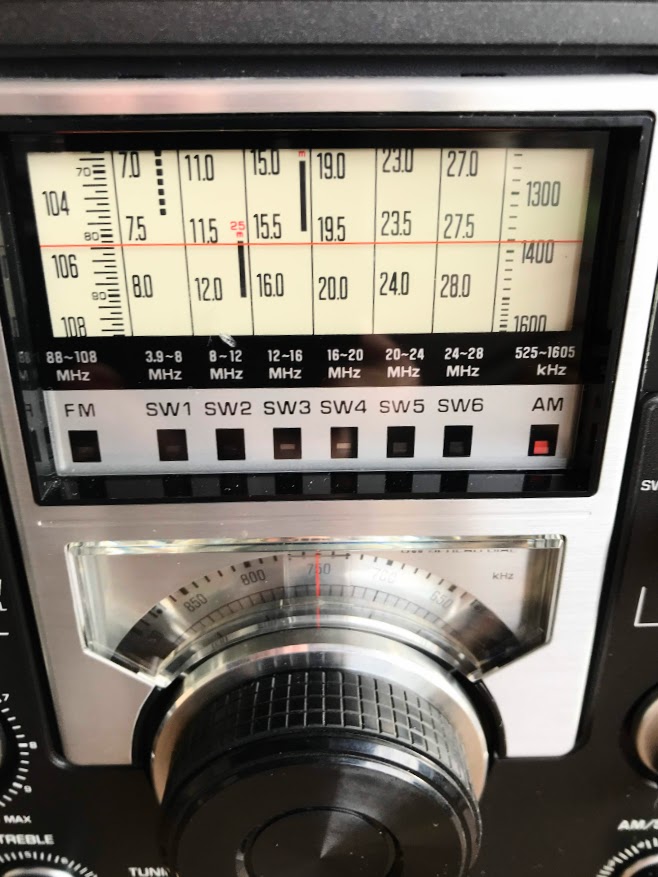 Many thanks to SWLing Post contributor, Mario Filippi (N2HUN), for the following guest post:
Many thanks to SWLing Post contributor, Mario Filippi (N2HUN), for the following guest post:
A Look Back: Memories of the Panasonic RF-2200 and its Sibling, the National Panasonic DR22
by Mario Filippi, N2HUN
All photos by author unless otherwise noted
One of the preeminent AM/FM/SW portables of all time is the venerable Panasonic model RF-2200 receiver that was sold in the USA starting in the mid-1970’s for around $165.00 US.
Weighing in at a hefty 7 pounds, 13 ounces and vital statistics of 12” x 7” x 4” it came equipped with a robust shoulder strap to schlep from the radio shack to alfresco listening sites and was basically a completely self-contained entertainment center for the radio enthusiast. My first RF-2200 was purchased in the late ‘70’s from Grand Central Radio Shop in New York City, now just a memory and long gone, but back then they sold a bevy of shortwave and ham radio equipment.
It was love at first sight when I saw the RF-2200 in the store’s gleaming glass display case way back when. The ‘2200 possessed all the bells and whistles to guarantee a good time for the SWL such as a rotatable ferrite AM broadcast band antenna, BFO (Beat Frequency Oscillator) for SSB reception, AM /FM/SW (3.9 – 28 MHz) bands, a D’Arsonval “S” meter that doubled as a battery status indicator, large four inch front mounted speaker, switchable coarse/fine tuning speed, base/treble/RF gain pots, 125/500 kHz crystal markers to calibrate the VFO, wide/narrow bandwidth switch, dial/S meter lights, earphone/recorder jacks and telescopic antenna for SW and FM. Plus it sported the renowned Panasonic trademark.
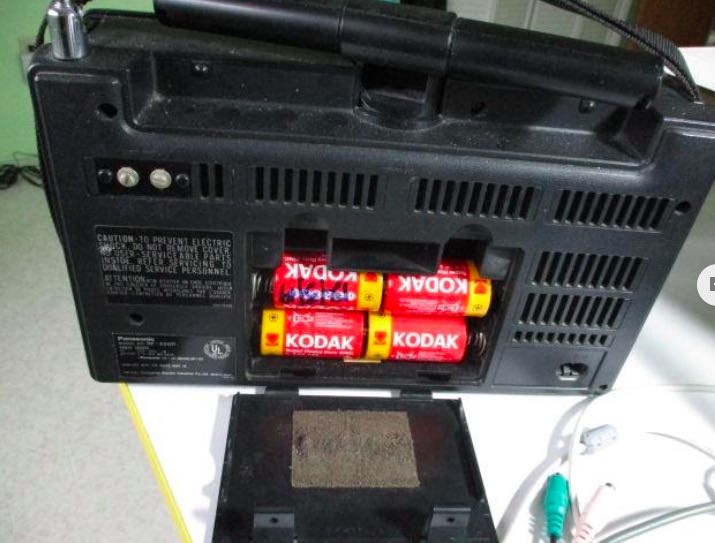
Photo 2. RF-2200’s rear: exposed battery compartment, screw connectors for external antenna, AC plug lower right. Rectangular earphone storage compartment is above batteries. Battery cover’s gray foam pad is dry rotted and needs replacement.
Part of the 2200’s ample avoirdupois can be attributed to the unit’s four “D” battery power plant, but Panasonic also supplied an AC cord to plug into the house mains and an earphone (located inside the battery case). It runs forever on those four stout dry cells, one of the many positive features of this vintage gem.
Back in those days portable radios generally were not judged and valued based their diminutive size and weight but on the array of features geared to the end-user. Front panels were festooned with an array of controls rivaling an aircraft’s cockpit. Knobs, analog dials, meters, large front-mounted speakers, switches and lots of black plastic were the order of the day. These all contributed to the beauty and practicality of portable shortwave radios back then.
One thing missing though was built-in memory channels; those existed in the operator’s brain and not yet delegated to memory chips.
One of the features long gone and missing in modern receivers these days is the “recorder out” jack that looks identical to an eight-inch earphone jack and yes the ‘2200 has one. It was used to plug in a tape recorder to memorialize an op’s favorite radio show. Of course back then there were many more shortwave stations broadcasting. Gone also are those tiny incandescent bulbs, sometimes described as “grain of wheat” lamps that were used on S meters, dials, etc. The RF-2200 sports ample illumination for the S-meter and tuning dial which makes it a perfect bedside table radio for late night DX’ers and insomniacs.
Speaking of DX, the ‘2200’s rotatable AM ferrite antenna is one of the main virtues this radio possesses. As an avid AM DX’er and faithful disciple of AM radio in general, the ‘2200’s rotary directional antenna nulls out noise and routinely pulls in stations as far away as Nashville (WSM), Chicago (WBBM), St. Louis (KMOX), Atlanta (WSB), Boston (WBZ) and Toronto (CJBC) when the sun goes down. Look closely at the antenna mount’s base and you’ll even see compass-like degree markings that’ll help when retrieving a favorite local or DX AM station.
Shortwave coverage is approximately from 3.9 – 28 MHz as per the service manual, but I’ve checked the actual coverage of my unit using a calibrated service monitor and found it to be 3.47 – 28.9 MHz which makes sense since I’ve tuned to W1AW’s code practice on 3.581 MHz with no problem and have also heard the Volmet station on 3.485 MHz. That’s good news for hams wanting to receive 80m CW. It gets a bit tricky though using the fine tuning option for CW hi hi.
AM broadcast band coverage is only from 525 – 1610 kHz as per the specifications; the AM band had not yet been extended to 1710 kHz at that time. The ITU approved the extension in 1988. With that in mind I wanted to determine what the actual band coverage of my unit was. Again, using an IFR service monitor it was found to be from 514 – 1720 kHz; that’s good news for those who listen to stations at the top of the band. It also explains why I can hear YWA, a non-directional radiobeacon (NDB) from Toronto, Canada just below the AM band on a frequency of 516 kHz. If you own a RF-2200 or DR22 tune to the bottom of the AM band and listen for it. You may also hear the warbling sound of NAVTEX stations on 518 kHz. Switch on the BFO and wait for dark, you might get lucky like I have.
My apologies for not being an FM broadcast band listener so all I can state is the few times I’ve listened it sounded absolutely great. The specs state a FM broadcast band frequency range of approximately 87.5 – 108 MHz. Mine measured from 86.8 – 108.9 MHz but I’ve yet to realign my unit so these ranges may vary among the population. Note that I have undertaken the labor intensive task of aligning my National Panasonic DR-22 which is almost the exact same unit as the ‘2200. You can search this blog for my results that were kindly published by Thomas previously (click here to read).
For those not aware, the RF-2200 was also marketed in Europe as the National Panasonic DR22 and in other parts of the world as the Cougar 2200. My DR22 was an eBay purchase, and that’s the best place to find either model.
DR22s are rather rare compared to the ‘2200 though. First off, one of the major differences with the DR22 is that it runs on either 110 or 220V, and that’s accomplished by a switch on the back of the unit.
The DR22’s front panel stenciling is slightly different too, as shortwave bands are labeled “KW 1 – KW 6” in addition to “SW1 – SW6”. Not sure what “KW” means though. Perhaps some reader can enlighten us.
Well, that’s about it, if you want a RF-2200, or DR22 then window shop on eBay. Lately they have been selling from $40.00 US (parts only) to $455.00 for pristine units. That’s a pretty wide price range and even I’m surprised at the high prices being gotten for clean units. All I can say is that the two I have now are staying right here in the shack with me.
Thanks for reading and 73’s.
eBay searches (note these eBay partner links support the SWLing Post):
Thank you so much for sharing this excellent post, Mario. Like you, I’m a massive fan of the Panasonic RF-2200; in fact, I own two of them! It is, in my opinion, the best AM/MW portable ever made.
Post Readers: Any other RF-2200 and DR22 owners out there? Can anyone explain why the DR22 labels shortwave bands as “KW1 – KW6”–? Please comment!
Do you enjoy the SWLing Post?
Please consider supporting us via Patreon or our Coffee Fund!
Your support makes articles like this one possible. Thank you!

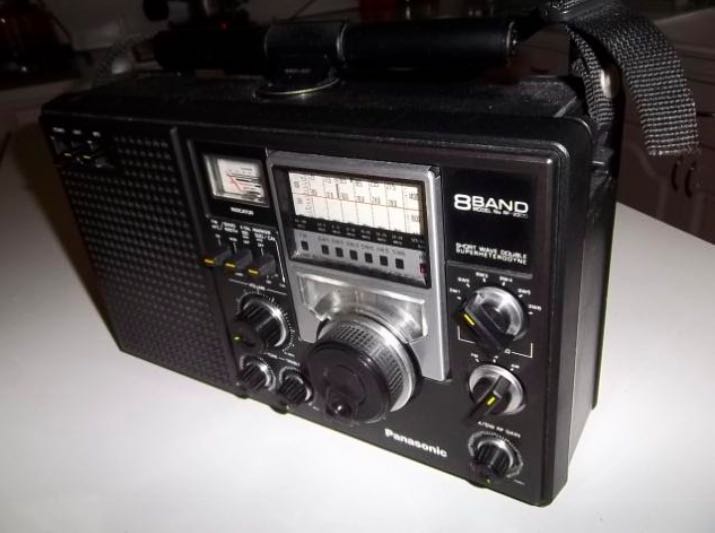
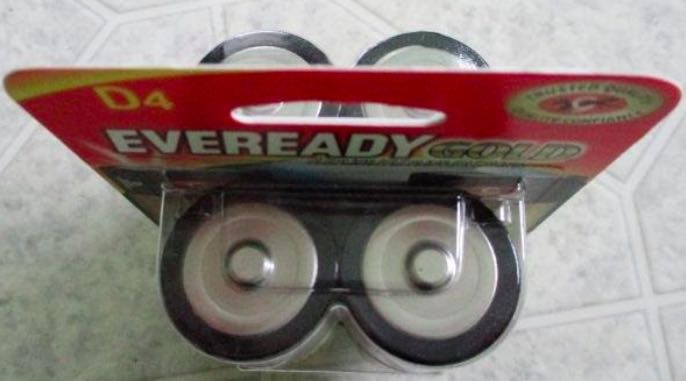
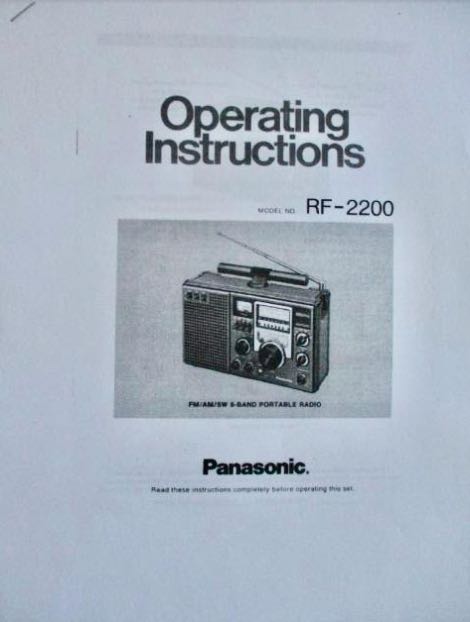
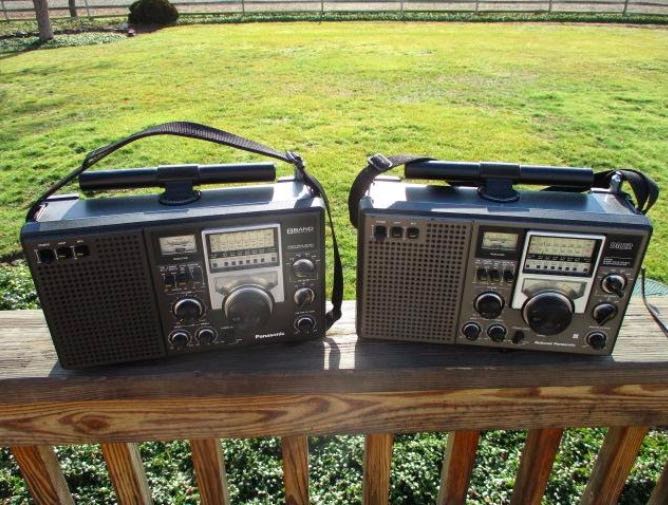
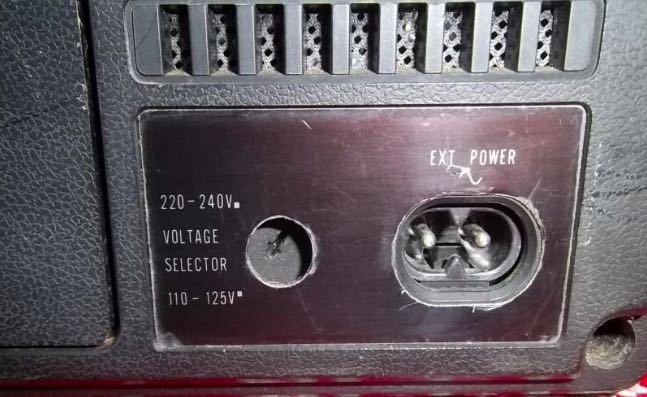
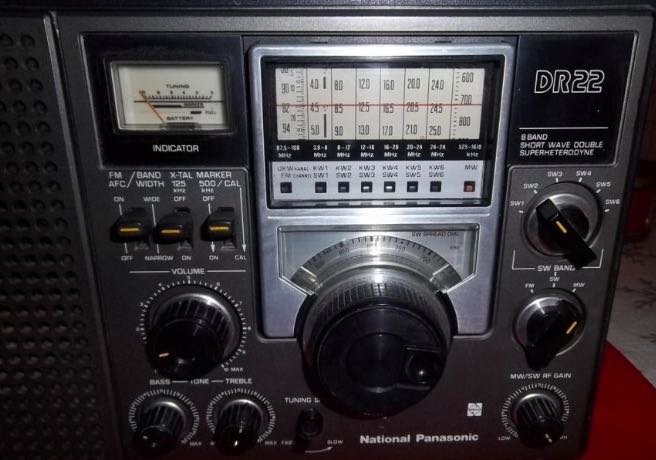

Hello to all,I am hoping someone will be able to help me with the following.I have a National Panasonic short wave radio model number DR22 in great condition.I am based in Australia and I am having trouble finding a 2025 valve. Would be much appreciated if someone could help out with a current valuation.Thank you
What is the best long external wire (gauge and conductor) for a Pansonic RF-2200?
Note: I have an Archer transgormer to connect to the two terminals at the back of the receiver.
Any comments will be helpful.
hello, i just repaired one of these that i had gotten from my grandfather. seems working OK now. but i wanted to do the calibration I’ve heard of, what all do i need to do it? all i have are a few analog and digital multi-meters, a variable regulated power supply, and an older analog scope. is that enough to do anything with?
thx!
Vlado, Has repaired a lot of radios for me and a RF2200 is on the way to him now for refurbishing.
I brought an RF2200B in 1977. Used it onboard my 1st ship until it literally fell apart. Beautiful receiver that worked like a champ. Wkuld get another one via ebay now but waay too steep price-wise. So mybR75 and Quantum Loop will have to do.
Though not a true enthusiast, I did collect AM “Q” cards as a kid in the 60’s. I acquired a 2200 from a nice lady who was moving to assisted living. I do love it but aside from the usual scratchy pots, I have zero SW reception in any band. Should I ship it off to Vlado?
He could probably sort it out for you. Vlado has re-capped numerous RF-2200s.
If you ship it to Vlado, you will get back a Super performer. Please don’t let your RF 2200 die ….
Yes it is. I just got my RF-2200 repaired by a person that specializes in this radio. His name is Vlado and his website is https://hamradio.repair/. I can highly recommend him.
My RF2200 from the late 70’s just quit working. It was caused by aging electrolytic capacitors. I was able to find a fellow named Vlado that does expert repairs on the RF-2200. He replaced all of the electrolytic caps, and did a full alignment with a very quick turnaround. It is now good for another 20 or 30 years!
Vlado is an amazing repair technician!
I Had a RF2200 when I lived on a remote island in Micronesia in the 70’s and 80s. I strung a 100′ wire antenna to the breadfruit tree next to my house/store. It was the only communication with the outside world for years. It gave years of service even being about 200 yards from the edge of the reef with all the salt spray. Used it when I came back to the states for years as my work radio. Can still remember listening to the 85 Bears Superbowl on Armed Forces Radio. I don’t know if there are any radios made today that could compare. Wish I could find one like this and not pay $300+.
Perhaps? https://www.shopgoodwill.com/Item/127140499
Kurzwelle is shortwave, UKW is FM. Got a DR22 from a Dutch seller and those are marked SW. Some models are labelled National Panasonic, others Panasonic. Modes with KW must have been conceived for the German speaking countries.
Kurzwelle is shortwave, UKW is FM. Got a DR22 from a Dutch seller and those are marked SW. Some models are labelled National Panasonic, others Panasonic. Modes with KW must have been conceived for the German speaking countries.
I owned both the National DR 48 plus the DR 49.Very little difference between the two,and I called them the “Black beasts”.They were very heavy to move arround with their all metal case,dozens of brass screws,and real brass tuning condensers.The circuit boards were bakalite.They were fully portable with size D batteries that fitted in the rear,as well as a mains AC power lead.But the main thing was the very clear receive of distant stations and a noise cut switch for both SW,and mediam wave bands and a very clear FM band.Infact the FM circuit was way ahead of it’s time,because not many countries had FM stations back when these were built,and the FM circuit board was seperate from the rest of the receiver.These receivers really proved their worth in the South Pacific islands dueing the early years when Doctors,school teachers and government officals were sent there from their main land to serve their duties amongst in the isolated villages.These receivers were mostly used to listen into the BBC,ABC and USA on short wave and both Millitary broad casts and Marine weather broadcasts on USB with the aid of a BFO.With a long wire antenna,that never over loaded,these receivers with their analoge tuning scale plus digital read out were a very acurate and high powered receiver.The only negative report I could give,would have to be the Band change switching.Once the very tiny finger type contacts wore inside the enclosed caseing,it proved the radio useless,because without the band changer working,one could not change the SW bands,or operate the receiver.Opening up the metal caseing to inspect the band changer only showed very worn and curled brass tips,totaly unrepairable ,so that indeed ended the life of what was once one of the best receivers National Panasonic ever made.
Lol I just checked the prices of these radios on Ebay, a bit ridiculous but then again, would you buy one instead of a Tecsun S-8800 ? the S800 is a good radio but sadly let down by distorted SSB like on the PL-880 but the SW performance of both radios is excellent, AM is ok.
The new offerings from Tecsun look like radios from the 90’s they just don’t look like new gen of radios.
I sure would love to add a RF-2200 to the collection though.
Has anyone ever heard of the Sanyo Transworld ? I have one at home, pure eye candy, I love it.
I also have the Koyo KTR 1770, another joy of a radio to look at and use.
It’s such a shame they don’t make proper radios any more.
Hi Mark,
I have a Panasonic RF 2200, acquuired it from a house clearance about 5 years ago. It’s now surplus to requirements and I’m looking around on line to see if there is a demand.. Saw your comments so thought I’d get in touch. I live in Northamptonshire.
Are you interested?
I really wish such radios were still manufactured and readily available. Something is lost without the those old analog treasures.
I had a 2200 and loved it. Gave it away to a nephew when I got into digital readout.
By the way, model railroaders still use “grain of wheat” bulbs for their engines, cars, and buildings and are still in great supply. You have to be adept at soldering in order to replace them but they’ll last a long time.
Kurzwelle is German for short wave.
Whence KW.
From the on-line German dictionaries, KW might be:
Kurzwelle {f}
shortwave
short wave
high frequency
and UKW might be:
VHF
UKW-Sender VHF station
Maybe someone from Germany can confirm this.
73
Bill
WD9EQD
UKW = Uber Kurzwelle? “Above Shortwave”?
UKW = Ultra Kurtzwelle i.e. “beyond”/”extreme” short wave 😉
It’s actually marked “KW-1” etc… and FM is marked “UKW”. These are the European designations for the bands. I’m not sure what they mean, but my Telefunken Atlanta has those markings as well, exclusively…
…joe
Joe you are correct, it is KW-1 – KW-6, sorry for the error folks. And yes the FM band is marked as you said. Thanks for the correction.
Have to remember to keep my bifocals on hi hi.
I’ll correct this in the post, Mario.
Many thanks Thomas and sorry about the error.
While you’re at it, there’s also “an eight-inch earphone jack” 😉
Just got an RF 2200 from a neighbor. Volume will randomly go up and down with a lot of static. Is this repairable?